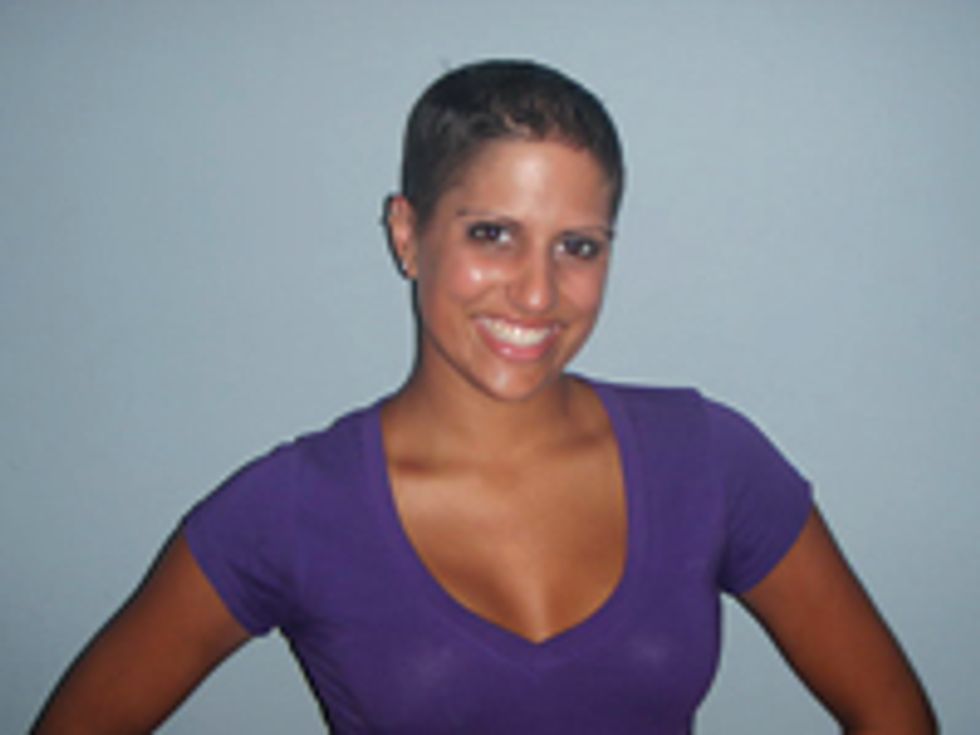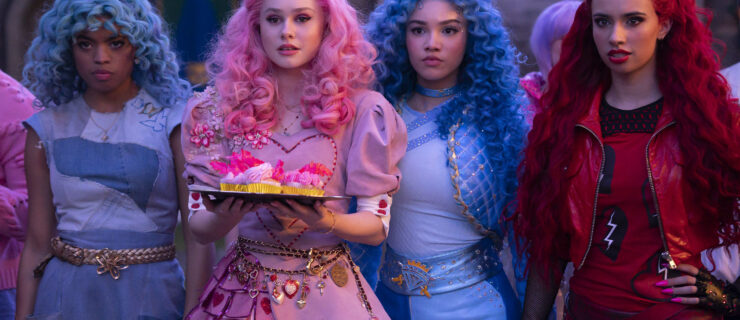Survival Skills: A Teen Dancer Talks About her Fight with Cancer
In the fall of 2009, dancer Emily Amador was entering her senior year of high school and her final year as a member of the competition team at First Position School of Dance in Milltown, NJ. Life was going according to plan—and then everything changed. After discovering lumps on her neck and near her collarbone, Emily was diagnosed with Hodgkin’s lymphoma, a type of cancer. Many dancers would’ve taken time off while undergoing treatment, but not Emily. Between chemotherapy sessions, the then 18-year-old continued to take classes, rehearse and compete with her team. Here, Emily shares her story with DS. —Katie Rolnick
I started off my senior year with confidence, ready to push myself to have my most successful dance year yet. Before I knew it, it was February and time for our competition routine dress rehearsal. While I was changing costumes, something caught my attention: a small, hard bump about the size of a marble on the right side of my neck. I ignored it, thinking it would gradually go away.
I was wrong. The bump only grew larger with time. And a few weeks later, I noticed another lump in the dip of my collarbone. This one scared me. It was the size of my fist and felt like five balls clumped together. I showed my mom and she made an appointment with my pediatrician.
I arrived at the doctor’s office expecting her to write me a prescription and send me on my way. But when I showed her the lumps on my neck and told her about my recent bout of nausea, she looked worried. All of a sudden, there were three more doctors in the room and a nurse taking blood samples. I was confused and nervous, but tried to stay calm as we headed to the hospital for more tests.
When I arrived, a doctor told me I would be staying in the hospital for a couple of days. That’s when I really started to panic. His name tag said he was in the oncology group: cancer. My hands started to sweat. I couldn’t swallow because I knew what he was about to say. He explained that he was almost certain I had Hodgkin’s lymphoma, a type of cancer that prevents the lymphatic system from working correctly, which basically means that it’s harder for the body to fight infections and diseases. Thoughts and questions were flying through my mind—but my biggest concern was that my first dance competition was just four days away.
I had to get a ton of tests to see if the doctor’s prediction was correct. I had a biopsy surgery during which doctors removed a portion of my enlarged lymph node to see if there was any cancer in it. I couldn’t move my neck for days. Who knew a three-inch cut would hurt so badly? They also drilled two holes in my lower spine to drain out bone marrow fluids to see if the disease had infected my bones. Luckily, it hadn’t. But the other tests came back positive. On March 18, I was diagnosed with Hodgkin’s lymphoma type 2 stage A, which meant we had caught the disease early. It had only spread through two sections of my body—my neck and chest—and I wasn’t yet showing all the symptoms, such as swollen lymph nodes, fever, night sweats and weight loss.
After the biopsies, I was in too much pain to dance at my competition that weekend, but the doctors released me from the hospital so I could go watch. My dance company friends did everything they could to make me feel included. They wore violet ribbons (the color that represents Hodgkin’s lymphoma) on their warm-up jackets. And at the end of the production number, I joined them onstage for their bow.
The following week I started my first round of chemotherapy, and two weeks later I started to lose my hair. It fell out everywhere—in the shower, on my pillow, in my hairbrush and even at school. Within a few days, I had only about half my hair left. I couldn’t stand it, so I decided to just cut it all off.
But I hated being bald. I was used to taming my curly hair every morning. My aunt’s friend, who was also a Hodgkin’s lymphoma patient, recommended a wig store in NYC. The owner handmade a beautiful wig for me that looked like my real hair. It had a natural wave, side bangs, a part and layers. (It was made with human hair—it takes hair donations from five or six people to make just one wig.)
The doctors let me decide when I was ready to dance again. About two weeks after my first round of chemotherapy, I had no pain and felt strong enough to compete at Showstopper in Edison, NJ. I was nervous that my wig wouldn’t stay on while I danced and tumbled, but the double-sided wig tape I used kept it in place. I was able to perform in all of my numbers, but I had to leave out some of my more challenging acro moves. (Throughout treatment, I had to be careful to avoid injury and illness because my immune system was weakened.) Being able to dance again felt amazing. It made me forget about everything that was happening.
I danced throughout the spring, taking time off for my chemotherapy sessions. (I had a second treatment in mid-April and a third in May.) Sometimes I felt weak and tired. And there were times when my blood levels were low—doctors measured my red and white blood cells and platelets—and I wasn’t able to leave the house, even to go to school. But my friends brought me my homework, and doing it helped the time pass more quickly.
In the middle of my treatment, I participated in a dance-a-thon at Rutgers University with my competition team to raise money for kids with cancer. My dance company is involved with this charitable event each year, but this year it was extra special because of my diagnosis.
My last chemotherapy session was a week before prom. The dance was wonderful, and my boyfriend and I were Prom King and Queen!
Throughout this experience, everyone at my studio was very supportive. About a week after my diagnosis, the studio ordered special bracelets that said “Emily’s Entourage,” and sold more than 1,500 of them to raise funds for my treatment. They also held a BBQ for me after I completed chemotherapy. The event had been planned for June 6—which ended up being a few days after I found out that the cancer was no longer active.
This experience changed the way I see the world. I feel like a different person, a new Emily. Physically, I am feeling better than ever—and my hair has already started to grow back! I’m proud of my bravery and dedication to everything I do. I don’t let anything get in my way.
A survivor is someone who lives. I am a survivor.
Emily’s studio dedicated its 2010 recital to her. It was called “Glory,” in reference to a quote by Confucius: “Our greatest glory is not in never falling, but in rising every time we fall.”
Editor’s Note: This fall, Emily began her freshman year at Rutgers University, where she is a member of the Rutgers Performing Dance Company.




